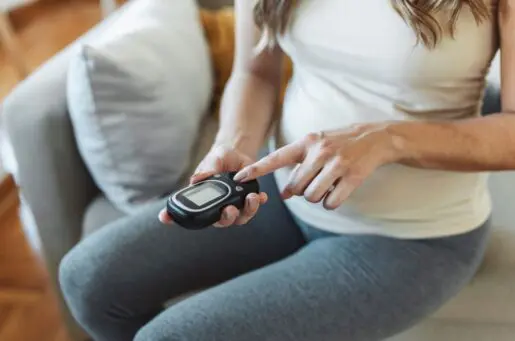Bioethics Forum Essay
Kidney Donors Should Be Treated Like Philanthropists, Not Like Vendors
Several years ago, one of us (Martha) decided to donate a kidney to a woman she read about in the newspaper. The newspaper article said that unless she could find a kidney donor the woman might die. Martha wanted to help, so she called the transplant center number that was listed in the article and volunteered to donate. She was motivated, in part, by her own family’s experience. A beloved cousin had gotten a kidney transplant decades before. Martha wanted to pay it forward.
She expected the process to be difficult but thought the difficulties would arise from the complicated surgery that she would undergo. She didn’t anticipate the difficulties that would arise from the process by which donors are evaluated. That process dragged on for months and was, in her view, both inefficient and demeaning. Martha had a background in management. She realized that the customer service values of the transplant center were abysmal. They didn’t treat her like an honorable altruist. She was treated as if she was somewhat insane for wanting to donate. Much of the evaluation was an intrusive inquiry into her mental health.
She sought advice from her friend John Lantos, a bioethicist, to better understand why transplant centers didn’t have programs in place to make organ donation easier.
Together, we identified three types of barriers: financial, stigma-related, and bureaucratic.
Financial barriers arise from the indirect costs of donation. Living kidney donors’ medical expenses, such as blood tests for histocompatibility; the extensive medical and psychological evaluations; and the transplant surgery, post-operative care, and subsequent monitoring, are covered by the recipients’ insurance. Other costs are not. There are costs for travel, childcare, and time off work for the required evaluations. These can add up to thousands of dollars. Martha and her husband spent 380 hours, nearly 10 full work weeks, in the process. Out-of-pocket expenses for travel were more than $4,000. Such financial barriers limit the pool of people who can donate a kidney.
Stigma barriers arise from the outdated notion that people who volunteer to donate kidneys do so for psychopathological reasons. Thus, they must be psychologically evaluated before being permitted to donate. Some of these evaluations are useful. But, in Martha’s case, she was required to schedule an evaluation with a substance abuse counselor because she disclosed occasionally using marijuana. She was asked to provide detailed records from the psychologist she occasionally consulted for career and life advice. Such barriers not only reflect outdated views about both recreational cannabis and the role of psychological counseling in people’s lives. They also could cause many people pursuing organ donation to abandon the effort.
Bureaucratic barriers arise because organ donors are not treated like other patients. They fall into an ambiguous category by which they are seen not as a sick patient nor as a valued donor. Instead, they are (in Martha’s perception) treated like part of the supply chain or, in other words, as a vendor. It is their job to meet the hospital’s needs, not the other way around. Evaluations are scheduled at the convenience of the doctors, regardless of the inconvenience to the donor. Martha spent three days at the transplant center, undergoing a grueling schedule of back-to-back tests and appointments. The transplant center refused to allow any tests to be done at outside labs, so Martha had to choose between driving to the transplant center three days before the scheduled surgery for a single blood test or, instead, figuring out on her own how to have the blood drawn locally and then shipped with dry ice, a complicated process for which the transplant center offered no assistance. Many potential donors lack the time or persistence to meet these scheduling and logistic demands.
These barriers exist because of a failure to honor the donor for giving a valuable gift not just to the organ recipient but also to the transplant center. Unlike patients, they enter the system to give, not to get. They are more like philanthropists than they are like patients. They should be treated as such.
Most medical centers know how to treat financial donors. They honor them. They court them. They make it as easy as possible for the donor to give. For organ donors, transplant centers care about the quality of their medical care but not the quality of their scheduling, travel, or logistic experience. The entire transplant system seems designed to thwart their efforts rather than encourage them.
There are remedies to all three types of barriers.
Insurance companies and Medicare could reimburse kidney donors for expenses including time off work for both the donor and their caregiver. To be clear, reimbursement for expenses would not be payment for an organ, which is prohibited by law. It would not require endorsement of free-market mechanisms to increase donation. It would only require an understanding that the full cost of donating an organ includes more than payments for direct medical care and a recognition that financial barriers make it impossible for many people to donate.
Such programs would be cost-effective. The lifetime costs of transplant and post-transplant care are much lower than the costs of dialysis. Recent reports estimate the average cost of dialysis at $89,000 per year, while the average cost of a kidney transplant is $32,000 for the surgery and $25,000 per year after that.
This cost savings accrues directly to payers, including American taxpayers who, through Medicare, pay $35 billion annually for expenses of end stage renal disease. This amounts to more than 6% of all Medicare expenditures. Every kidney transplant will save payors hundreds of thousands of dollars in the long run.
Stigma barriers could be addressed by transplant centers updating their policies regarding donor evaluation and screening to reflect current thinking, rather than old-fashioned views about recreational cannabis and mental health counselling.
Bureaucratic barriers can be addressed by adopting more efficient models of donor evaluation, such as telemedicine. Transplant centers could also safely streamline the evaluation process. Belfast City Hospital completes donor evaluations in one day with excellent results.
We need more living kidney donors. There are currently more than 93,000 people in the United States on the kidney transplant waiting list. Every day, 13 of these patients will die waiting. The best hope for these patients is a kidney transplant, and the best transplant outcomes occur when kidneys come from live donors.
Kidney transplants from living donors have many advantages over transplants from deceased donors. Living donor transplants allow for greater flexibility in surgical scheduling, avoiding the last minute rush associated with cadaveric organ transplants. The five-year survival rate for patients who receive a kidney from a living donor is 94% versus 87% for those who receive a cadaveric kidney. By 10 years after transplantation, half of cadaveric kidneys fail compared to one-third of kidneys from living donors.
If we were to adopt the appropriate view that kidney donors are philanthropists who make valuable contributions to transplant centers, taxpayers, and, most importantly, other patients, we would see that it is imperative to reduce barriers to living donation and encourage these acts of life-saving generosity. This could save lives and improve the quality of life for thousands of Americans with renal disease.
Our outmoded and inefficient approaches to living kidney donation cost lives and cost money. We must adopt better policies and procedures to increase the number of living kidney donors. Everyone will be better off.
Martha Gershun, MBA, (@mgershun) is a nonprofit consultant, writer, and community volunteer. John D. Lantos, MD, (@johnlantos) a Hastings Center fellow, is the Glasnapp Family Foundation Endowed Chair in Bioethics and Director of Children’s Mercy Bioethics Center at Children’s Mercy Kansas City and a professor of pediatrics at University of Missouri School of Medicine. They are the authors of Kidney to Share, published last month by Cornell University Press.














Thank you both for this insightful piece. I couldn’t agree more!
In this timely and powerful commentary, the authors remind us that altruism must remain at the heart of organ donation whether it’s from a living or a deceased donor. They make a cogent case that the current system has fundamental flaws — financial, stigma-related, and bureaucratic — that need to be addressed head-on if organ donation is to approach its full potential. Their recommendations for change should be read by every transplant center, every organ procurement organization, policymakers in Washington, and the National Academy of Medicine Committee that is currently studying how to improve the organ transplant system in America.” Blair L. Sadler, JD and Alfred M. Sadler, MD
Thank you for this insightful post. Martha’s case does highlight the financial, stigma, and bureaucratic barriers that donors face during their donation journey. As for the financial obstacles, the New Zealand model suggests that these barriers can be eliminated- qualified donors may be eligible for up to twelve weeks of compensation for lost earnings while recovering. While you have noted direct reimbursement is prohibited by law, supporting the donors’ expenses and lost wages could incentivize more living donors to donate and motivate centers to ramp up marketing efforts. These efforts could help the organ supply crisis and bring living donors into a more prominent position within the organ transplantation conversation.
Thank you for this insight into the organ donation process. There seems to be such a large gap between those advocating for the organ donor registry and those assessing and working with living donors. The positive and altruistic effects of organ donation only seem to be touted when considering organ procurement from a dead donor. It feels counterintuitive that donation after death is considered a way for a loved one to live on and give someone else a chance, while it seems that living donors are treated as borderline psychiatric cases. This lack of consistency is baffling. Prohibitive costs and numerous inconvenient appointments aside, the skepticism surrounding living donation reflects the some of the entrenched values of our society. Perhaps a re-framing of the living organ donation process begins with a deeper questioning of the biases that cause such skepticism in the first place. In order to change and question, we must first find awareness.
Thank you so much for this important piece which highlights the impact that ease of donation has on the involvement of potential donors who are so sorely needed. As a student of the field of Narrative Medicine, I cannot help but draw connections between the exposition of the current narrative framing of donors and the possible reframing proposed here. As we understand the inconsistency between the extreme need for willing donors like Martha for the outstanding numbers of individuals awaiting that fateful call that they have a match that could save their life, it seems entirely counterproductive to require protocols that so clearly present barriers to donation. I wonder how reframing of these donors within the healthcare system could also be incorporated into more widespread invitation for the organ donation registry process.
Thank you for providing this perspective. In Narrative Medicine, we’ve discussed the way bodies are commodified through the organ transplantation process, and I found myself thinking back to those conversations when reading about the different barriers, specifically the bureaucratic barriers: “Instead, they are (in Martha’s perception) treated like part of the supply chain or, in other words, as a vendor. It is their job to meet the hospital’s needs, not the other way around.” The lack of honor given to organ donors contributes to this problematic way in which bodies are viewed. It struck me as odd that Martha was treated as “somewhat insane for wanting to donate,” especially when there’s such a need for donors. Surely a gift such as this warrants more respect, and who should be more understanding of this than the healthcare system? I also found the proposed solutions helpful since it lays out how the transplantation process can be improved, and it made me wonder if telemedicine might become more of a possibility in the future given how it was utilized during the pandemic. I’m curious about whether, since the time of this article’s publication, telemedicine has played a bigger role in the organ transplantation process. And if it has, has it helped in making the experience easier on donors?
Thank you to the authors for sharing this insightful post about a personal experience with volunteering to donate an organ. When reading about Martha’s experience with choosing to donate a kidney, I was disappointed to read that Martha felt like, “She was treated as if she was somewhat insane for wanting to donate. Much of the evaluation was an intrusive inquiry into her mental health”. This specific quote from the blog made me reflect on the approach that healthcare providers take when they have conversations with donors who are volunteering. On one hand, in my opinion, the clinicians have a moral obligation to be attentive and ask the right questions to confirm that the volunteer donor is making a fully autonomous decision to avoid cases where the donor is somehow being coerced into making the volunteer donation. However, the clinicians should not approach the donor in any way that is accusatory or makes the donor feel like they are insane for wanting to donate, as in the case of Martha. The clinicians should be talking to the donor to make sure that the donor is making the decision out of their own free will, but these discussions need to be carried out in a way that is respectful and appreciative of the altruism of the donor. One possible approach to improving this is to train clinicians in how to have these delicate conversations and have them practice before working with volunteer donors. I completely agree that changes need to be made to help overcome the financial, stigma-related, and bureaucratic barriers that the authors identify, and helping clinicians improve how they approach conversations with volunteer organ donors can be a step in the right direction towards treating volunteer donors like philanthropists rather than vendors.
Martha’s experience should be studied by organ procurement organizations, care centers, and insurance payers across the country. We collectively look at the supply and demand issues surrounding organ donations and hypothesize on ways to drive donor-ship, but are remiss to address the existing organizational issues that remain herein. If the donor experience continues to be, in the words of the writer “inefficient and demeaning”, how can we as a bioethics community expect individuals without personal ties to a recipient in need to go through the process in the name of altruism? I also believe from a messaging perspective, if the OPO finds donors to be “somewhat insane” for donating, how can they have intelligent, respectable conversations with potential donors that aren’t biased against living donor donation?
Martha’s altruism spans, as the writer notes, beyond her agreement to have an invasive procedure and continue her life on with one kidney. Martha’s time, non-medical expenses, and emotional fortitude throughout the process have a measurable value that ostensibly is not considered in the organ procurement and/or donation process. The likening of Martha as a vector for supply versus a patient participating in a life-saving operation (for the donor) shows a clear blind spot in providership and care. The “gift” that in this essay is likened to a monetary donation, is one that has intrinsic value to both the insurance carrier as well as the medical center for which the organ transplant is occurring; however neither institution treat it as one, despite the financial incentive it provides to each.
Thank you for your thoughtful explanation of a process that is rarely brought into the light. Organ donation after death, as the primary mechanism discussed most often on the societal level, is clearly inadequate to meet the demand of the ever-growing transplant waitlist. Your post is a fascinating look at the underpinning of American culture- organ donation is viewed as an amazing gift deserving of praise when someone donates to a close relative (or indirectly through a paired donation), but if seeking a non-directed donation, it elicits concerns for mental health issues. I wonder what the level of relationship separates the praise-worthy from the “crazy”- would second cousins still be adequate for the transplant center to welcome the donor with open arms? Would donating to a casual friend from work cross the line?
Our culture tends to pride itself on independence, a focus on one’s own advancement, and a “pull yourself up by the bootstraps” mentality while simultaneously centering social structure on the family. In medical ethics this is also highlighted by the tension between the values of autonomy and beneficence, whereby we want patients to have access to a life-saving organ and yet have a system of opt-in postmortem organ donation which is poorly explained and poorly utilized. The lack of broad, clear public education around organ transplantation is one facet of the supply issue, as is the sense that one should only provide a living donation to a close relative. There are, however, clear non-zero risks associated with living kidney donation, in the short-term and long-term, so the process of ensuring a donor is medically appropriate and mentally well, is critically important. Organ transplant centers should work to find a more appropriate balance between confirming safety for the donor and ensuring the process is smooth, transparent, and open to various internal reasons which bring the donor in the door.
I close with the note that there are widely varying laws state-by-state in the U.S. some of which permit compensation for organ donors, for childcare, lost work, transportation, lodging, etc. These programs are likely under-utilized and the variability between states and institutions contributes to the challenges for those wishing to donate, under any circumstances. OPO’s and transplant centers should also work to access these federally and privately funded resources for their patients, which could increase the number of individuals able to provide this gift, when not restricted by the significant financial burden the process currently entails for many. Additionally, there is a bill proposed in 2024 in the House, which would create a program to provide a refundable tax credit for donors, which is an interesting potential mechanism to increase organ supply.
https://www.americantransplantfoundation.org/wp-content/uploads/2022/11/Living-Donation-Laws.pdf
https://www.congress.gov/bill/118th-congress/house-bill/9275/text
https://www.modifynota.org/end-kidney-deaths-act-summary